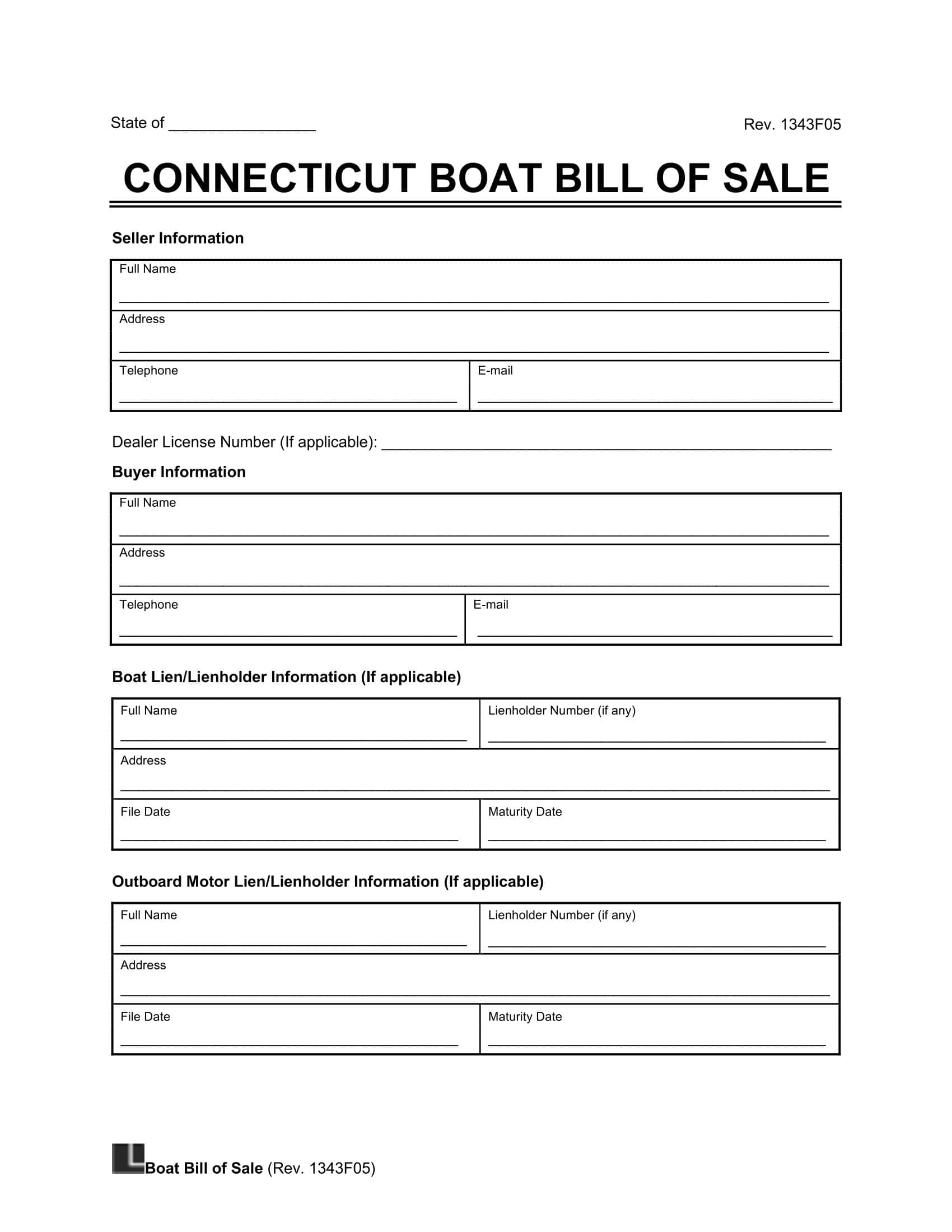A bill of sale for a boat in Connecticut is an agreement between two or more parties that transfers ownership rights.
A Connecticut boat bill of sale should provide the buyer’s and seller’s information and a description of the vessel, including the hull ID number, make and model year, length, and color. Connecticut requires such documentation for the new owner to register and operate the vessel.
Connecticut Boat Bill of Sale Requirements
You can use the same state-issued bill of sale form to register and title a vessel in Connecticut. Again, you may draft your own or operate a boat bill of sale, but it must contain all of the following items:
- The names and contact information of the buyer and seller
- The make, model, and year the vessel was built
- The hull identification number or HIN
- A description of the vessel
- The sales price
- The purchase date
- The seller’s signature
- The buyer’s signature (there is no space for this on the official form, though the DMV recommends it – if you draft your form, it is required)
The official Connecticut bill of sale, Form H-31, carries a penalty of perjury. It states, “I declare under penalty of false statement that the information furnished above is true and complete to the best of my knowledge and belief.”
Many other DMV forms also feature similar warnings. In Connecticut, perjury is a Class D felony, and the punishment can range from one to five years in state prison or a fine of up to $ 5,000.
Does a Boat Bill of Sale Have to Be Notarized in Connecticut?
A Connecticut boat bill of sale does not have to be notarized. However, it is wise for all parties to keep a copy for their records.
After Purchasing a Vessel
Private Sales
For buyers:
- Connecticut requires titling and registration for all boats with a motor or personal watercraft, such as jet skis, Sea-Doos, Wave Runners, and sailboats 19 ½ feet or longer. You do not have to register boats registered in other states using Connecticut waters for less than 60 days, vessels documented with the U.S. government, lifeboats, and vessels powered by only paddles or oars.
- To register and title a boat in Connecticut, you must go to your local DMV branch with an Application For Vessel Registration and Certificate of Number Decal, or Form B-148, a bill of sale, or Form H-31, your Connecticut driver’s license, an ownership document, which can be either the current Connecticut title, the current out-of-state title, or if your state does not require titling, the current out-of-state registration along with documentation from your state that says that it does not require a title, paperwork reflecting previous documentation with the U. S. Coast Guard, and proof that all use and sales tax was paid. Registrations completed by January 1st will expire the following year on April 30th.
- The vessel registration fees depend on the vessel’s length, type, and building materials. The DMV provides a chart of fees on its website. Other costs include a titling fee of $25, a duplicate boat registration fee of $20, and Connecticut use and sales tax, which is calculated at 6.35% of the purchase price.
- Only the owner of a vessel can request a duplicate registration. You must provide your vessel’s registration number, name, address, signature, and the $20 fee to do so. You can submit this in person at your local DMV or by mail.
Connecticut Boat Bill of Sale Template
Below, you can download a Connecticut boat bill of sale in PDF or Word format:


